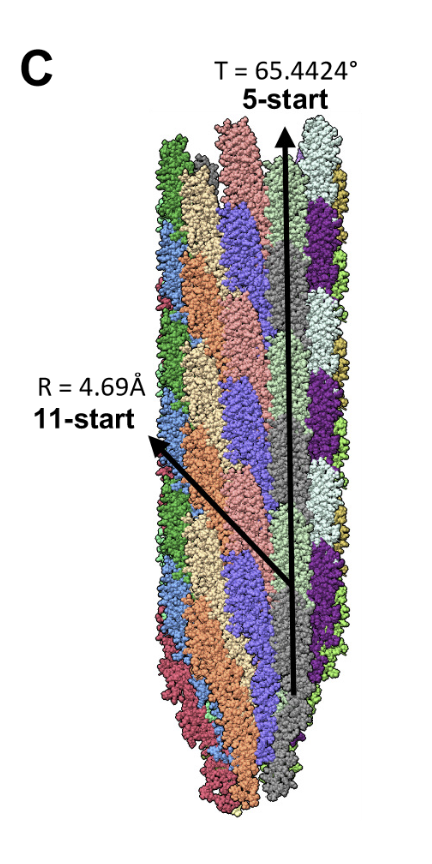In this preprint “Kinetic and structure-based comparisons of silent and stimulatory flagellin interactions with TLR5” by Bell et al., our most recently graduated graduate student Michael Bell reveals his cryo-EM structure of the silent flagellin FlaB from Roseburia hominis, the health-associated human gut bacterium extraordinaire. FlaB is “silent” because it binds very tightly the TLR5 receptor without eliciting much of a response (see Clasen et al. 2023). How tight does it bind? With graduate student Miriam Haag, Michael conducted Surface Plasmon Resonance measurements of how well FlaB binds compared to FliC (Salmonella’s highly stimulatory flagellin). They see very low KDs (e.g., both bind very tightly), but differences in the on/off rates that may related to the stability of the complexes. Michael explored the structural differences between FlaB and FliC, in addition to hydrophobicity and charge differences across the surfaces, that together may explain the observed differences in binding kinetics. We still have a lot to learn about how flagellins tune TLR5 receptor signalling but Michael has brought us closer to figuring it out.
This was a Max Planck collaboration including John Weir (FML) and Felipe Moreno (formerly at MPI-Biology), their lab members, members of the Ley Lab, and EM Facility members.


